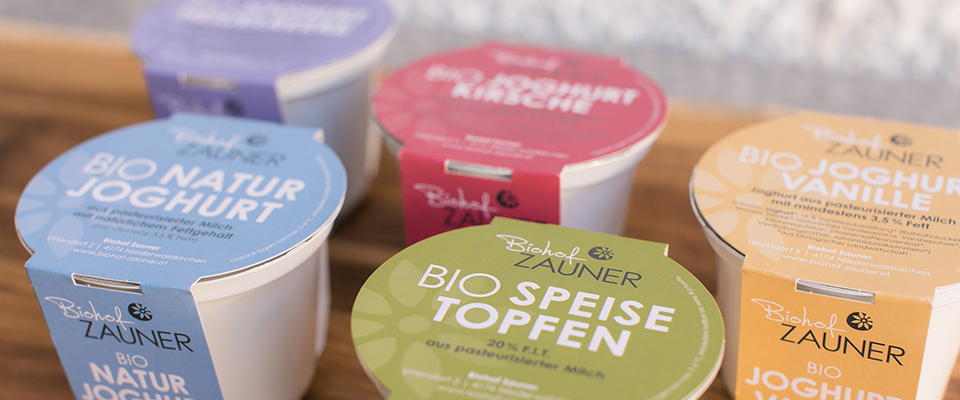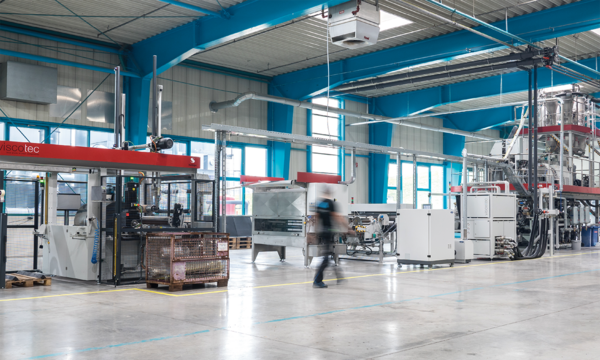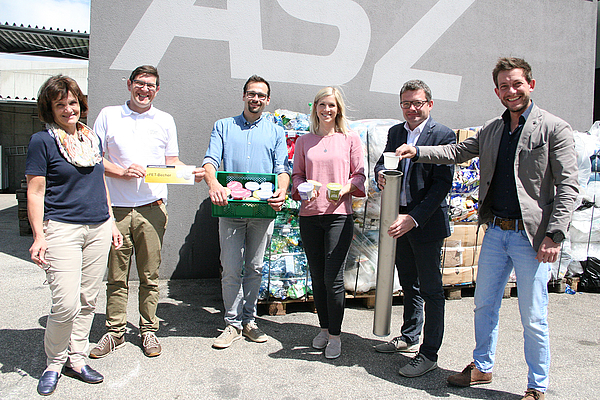Benefits of PET in a closed loop
PET is currently the only plastic in the European Union that can be recycled back into food-grade plastic packaging. Compared to virgin PET, recycled PET has a much smaller carbon foot-print. The recycling rate have to increase though, to take full advantage of the benefits of rPET. The European Union set a quota for the separate collection of plastic packaging waste of 90% by 2030 and introduces a tax for non-recycled plastic waste in 2021. It is the right moment to demonstrate the efficient and sustainable possibilities of the PET recycling cycle.
Organic yogurt in rPET cups
The Zauner family runs an organic dairy and wants to pack their organic products as ecologically and sustainably as possible. “In the past, we sold our yogurt in glass containers. These are heavy and the washing is time-consuming and requires a lot of water and detergent,” Christina and Leonhard Zauner name their reasons for looking for more sustainable packaging. Their require-ments were clear, but none of the existing solutions met all of them, since “the packaging should be environmentally friendly, stable and lightweight. We wanted the packaging to be re-cyclable and to protect the dairy products from UV light - ideally, it is white.”
100% recyclable
In Europe, dairy products are currently mainly packed in polypropylene (PP) or polystyrene (PS), which according to the European Food Safety Authority (EFSA) cannot be reprocessed into recy-cled material for food contact. Strictly speaking, recycling these materials is “downcycling” ra-ther than “recycling”. With rPET, Starlinger viscotec and PET-MAN rely on upcycling. “For us, recyclable means that the same product can be made again after it has been used by the con-sumer and recycled.” Since there has been no packaging solution for yoghurt which is recyclable according to food grade standards, they developed the first white cup made from 100% rPET.
The new rPET cup is not just made from recycled material, it is also designed for recycling. This assures 100% recyclability and turns the cup into valuable input material for recyclers after its use. First, the consumer removes the cardboard banderol and peels off the seal made from alu-minium. What remains is the rPET cup itself, which is not printed nor laminated with other plas-tic types. Both print colors and multilayer material would contaminate the material and impede recycling for food packaging applications.










